-
Content count
244 -
Joined
-
Last visited
Posts posted by Kongming
-
-
Hey guys, anyone know of the traditional interpretation as to who or what power is behind the oracle? Was it ever seen as heaven (tian), the gods (shen), immortals (xian), or some other related entity? In sum, who or what gives the answers?
I ask because I've received answers and had other experiences which convince me that the Yijing is most certainly "real" as it were so of course I am curious as to the power or entity, if any, behind it. I know some may respond with a more psychological interpretation as though ones own intuition reveals the answers and this may be partly true, but nonetheless remain interested in learning about any older conceptions regarding any identity to the oracle.
-
 3
3
-
 1
1
-
-
So I think I've made a thread with a similar question on here before, but figured I'd ask again in a different way.
Over the past year or more I've been trying to turn myself into a modern Viking...not necessarily in the context of a plunderer or raider so much as turning myself into a badass warrior insofar as possible. This includes nurturing a warrior mentality, training in boxing/fighting every day, lifting weights and growing in strength, and really just embracing that sort of Conan the Barbarian life despite its lack of utility in the modern world.
My question is it possible to proceed along the Daoist path (or similar spiritual paths others might follow, such as yoga, etc.) simultaneously with the above lifestyle? Can the above lifestyle come into conflict with ones cultivation or practices such as qigong/neigong and especially the potential practice of neidan?
Finally what do you think is the best way to integrate these two paths? For example, is it best to do neigong prior to or after exercise? Where does zhan zhuang fall? How about meditation?
In short I feel a strong inner urge or call to follow the warrior path, and yet I also don't want it to get in the way of what I see as life's most important or highest goal, namely spiritual cultivation aimed toward liberation and/or transcendence?
Please feel free to share whatever insights or recommendations you may have.
-
 1
1
-
-
The word "nature" has the connotation of being the natural world, the world of space-time, the manifest cosmos, which is indeed included in the notion of "Dao." This nature is the Dao's function or 用.
The word "God" has too many Abrahamic connotations, namely a personal, transcendent, and willful Being as the supreme reality who consciously creates the world and has a plan for the world, i.e. divine providence. Only two of these qualities really apply to the Dao, namely possessing a transcendent aspect and being responsible for creation, except in the case of the Dao it isn't a willful "creation" so much as a spontaneous emanation.
Neither are perfect but honestly God would probably be preferable if only because it maintains connotations of being transcendent, spiritual, divine, magical, supernatural, etc. whereas "nature" would too easily fall into the trap of modern materialism or scientific naturalism, and hence Daoism would be portrayed as simply being some kind of Chinese Rousseau rather than a path to the Dao or Ultimate Reality, namely to 的道成仙, or achieve the Dao and gain spiritual immortality/transcendence.
-
So I have a couple of questions relating to Yi Gong/Kunlun and associated terms for the common practice between them all. Please feel free to answer any one of the following questions:
1. Anyone still doing this practice? Seems going back about 10 years ago or so it was quite popular on this forum. If so what can you say long term practice has done for you?
2. What is the central goal or object of this project? What is it supposed to do in terms of ones qi, qimai, spiritual growth, and its relation to general Daoist cultivation?
3. Is practicing this compatible with other practices such as general qigong/neigong? In particular, does it conflict with neidan or the goals of neidan? Can it be beneficial to someone who hasn't begun serious neidan as a sort of preparatory practice?
Thanks in advance for any assistance.
-
 2
2
-
-
Seems with a bit more searching I have largely found the answer to my question:
In any case, does anyone know anything more about the Daoist mantras or 神咒 and if there are restrictions on reciting them? To take a popular example, one mentioned in the link above, the 金光神咒 "Jinguang Shenzhou"/ Divine Incantation of Golden Light. Can laymen recite this or does one need a special transmission? Is it meant to be repeated like a Buddhist mantra? Anyone know of any good books in English regarding these lesser known areas of Daoism such as ritual, liturgy, chanting, mantras, etc.?
Thanks again.
-
 1
1
-
-
Anyone what is the typical daily chanting done by modern Daoists, specifically Longmen/Quanzhen but really in general? Daily rituals if any?
Even better anyone know of any links with the chants (Hanzi alone are fine but with pinyin along would be ideal)?
I believe Stuart Alve Olson has a book which details some daily scriptures chanted or something but I suppose it'd be better to find them online as I imagine it is common knowledge, perhaps just less common in the English speaking world.
Personally am generally interested but more specifically I would like to add a chanting regimen into my daily routine.
Thanks in advance for any assistance.
-
5 hours ago, Sudhamma said:Who is the greatest 'Hinayana' of all times? No other then Buddha Shakyamuni. What then did this greatest Hinayana, the founder of Buddhism preach on 'Anatta' , Not-self, Non-ego, egolessness, impersonality? The following are extracts from The Buddhist Dictionary, Manual of Buddhist terms and doctrines by Ven. Nyanatiloka:
Quote:
From Visuddhi Magga XVI:
"Mere sufferring exists, no sufferer is found;
The deeds are, but no doer of the deeds is there;
Nirvana is, but not the man that enters it;
The path is, but no traveller on it is seen."
In the Buddha's second sermon, The Anatta-Lakkhana Sutta, the Discourse on the Characteristic of Non-Self, after His Enlightenment to His first 5 disciples, who after hearing it attained to perfect holiness, arahatta.
The Contemplation of Not-Self (anattanupassana) leads to Emptiness Liberation (sunnata-vimokkha). Herein the faculty of wisdom (pannindriya) is outstanding, and one who attains in that way the Path of Stream-entry, is called a Dhamma-devotee (dhammanusari; ariya puggala); at the next two stages of sainthood he becomes a Vision-attainer (ditthippatta) and at the highest stage, ie holiness, he is called 'Liberated by Wisdom" (panna-vimutta)".
Yes, no one denies that the 5 skandhas and all of phenomenal reality is "anatta" or without self. The question is whether there is a transcendental "Self" similar to the Hindu Atman. Admittedly a majority of Buddhists would say no, yet throughout Buddhist history there have been detractors to this view. Nibbāna as True Reality beyond the Debate by Potprecha Cholvijarn is a look at the debate in contemporary Thailand.
That said in many Mahayana sources, particularly Tathagatagarbha literature but also in Mikkyo, etc. one of the four "gunaparamitas" or transcendental qualities of the Absolute element (Dharmakaya/Nirvana) is "Self". Here's a snippet from Susan Hookham's "The Buddha Within":
The Four Transcendental Qualities. The Absolute Element is described as having four transcendental qualities (gunaparamita, yon tan pha rol tu phyin pa) when it fully emerges as the fruit of the path. "Transcendental" here is a translation of the Sanskrit word "paramita" meaning passed over to the other side; it is often translated as "perfection."
The four transcendental qualities are, (1) transcendental purity (subha paramita, gtsang ba pha rol tu phyin pa), (2) transcendental self (atma paramita, bdag pha rol tu phyin pa), (3) transcendental bliss (sukha paramita, bde ba pha rol tu phyin pa), and (4) transcendental permanence (nitya paramita, rtag pa pha rol tu phyin pa.)
Of course if you are more interested in a purely Theravada perspective, the previous article I linked and the book already mentioned are good ones, but other works explaining the differing perspective are those by George Grimm and Self & Non-Self in Early Buddhism by Perez-Remon.
QuoteThe Buddhist Belief is neither Nihilism nor Eternality-Belief. Nor the Buddha or any Theravadins should be labelled as 'Hinayana'.
Well "eternalism" is the view of perpetual existence in time or as a particular individual, such as a Christian conception of "John Smith" living eternally in heaven. That said timelessness is another form (or rather the true form) of eternity and nirvana is often equated with timelessness and thus is eternal. Walpola Rahula from “Voice of Buddhism” magazine, Vol 20 No.1:
Buddhism does not stop there. It goes a step further and says that there is a state which is beyond cause-effect and beyond space-time (akalika, Kalavimutta). That is the ultimate absolute “Truth” called Nirvana, which is outside the scope of physical science.
-
 1
1
-
-
9 hours ago, Sudhamma said:In this debate, the question of soul was debated (among other subjects) and of course, Buddhists would know that there is no-self, no-soul and no-Creator god within the Buddhist Dharma.
There is a controversy running throughout the history of Buddhism, from split of the earliest schools to the Dolpopa controversy in Tibet to the modern Dhammakaya movement in Thailand, on the topic of the Self in Buddhism and what the meaning of "anatta" is. So it's not as clear cut as some may believe or portray.
What is clear is that all conditioned phenomena and the 5 skandhas are "anatta" as well as "anicca" and "dukkha", namely impermanent and suffering. That triad of qualities is the mark of conditioned phenomena. Conversely, nirvana is seen as unconditioned, permanent, and bliss, the cessation of all dukkha. If the qualities of "anicca" and "dukkha" are reversed in the Buddha/nirvana, why not the other quality, namely "anatta"?
Here's what Nan Huaijin had to say on the topic:
When the Hīnayāna speaks of no self, it is in reference to the manifest forms of presently existing life; the intent is to alert people to transcend this level, and attain Nirvāṇa. But when this flowed into the world of learning, especially when it was disseminated in the West, some people thought that the Buddhist idea of no self was nihilism and that it denied the soul, and they maintained that Buddhism is atheistic. This is really a joke.
An interesting article discussing the topic from the other perspective:
http://lirs.ru/lib/tmp/Against_No-Atman_Anatta,Miri,AP,2002.pdf
QuoteThus, it is not correct to state that "the Buddhist goal...isn't too far removed from the Daoist notion of immortality..".
My whole point is that nirvana was conceived as the cessation of becoming, namely samsaric existence dependent on time/change, and thus the attainment of timelessness. Similarly Daoist celestial immortality was conceived of as the attainment of timelessness, at least as an internal state. Hence in their conception of the ultimate goal they don't differ greatly in that essential quality of timelessness, though as I stated previously they do differ in the details, approach, philosophy, etc.
-
 1
1
-
-
5 hours ago, Sudhamma said:The object of Buddhism is not neidan cultivation to become immortals or gods but to seek the Ultimate Release from samsaric existence.
True enough that Buddhism's goal is release from samsaric existence, but samsaric existence is "becoming" and dependent on time for change. Daoist immortality and the goal of neidan is to enter a timeless state beyond (and also have power or control over) the changes or bianhua, as is the goal of other alchemical traditions, Hindu yogic traditions, etc.
This transcendence of time was also a part of Buddhism. Here's a snippet from an article entitled "Nirvana, Time, and Narrative" by Steven Collins:
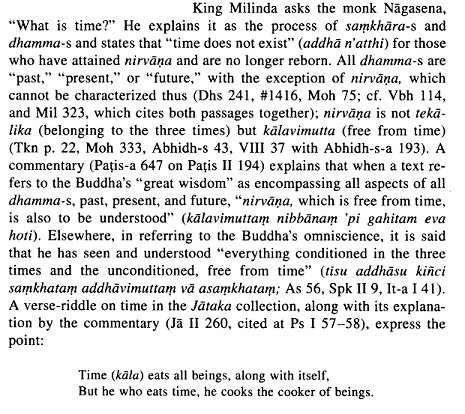
Thus the Buddhist goal and ultimate ideal isn't too far removed from the Daoist notion of immortality in the essentials, though there is considerable differences in how this was imagined in the details and especially in their approach of this goal, with Buddhist tantra being the closest to Daoist methodologies as noted by Mudfoot. The identity of the Buddha and Daoist immortal was often stated in Daoist works after the Song Dynasty especially when the 三教合一 or "three teachings as a harmonious unity" was emphasized and coalesces in movements like the Wu-Liu school.
-
 1
1
-
-
A few related questions on two broad topics:
1.) What is Daoism's (especially authentic Quanzhen/Zhengyi, etc.) view on the gods? Who are the most important gods overall and what is their typical function? Are the gods made use of in praxis such as deities are worked with in Hinduism and Buddhism? Whats the relationship, if any, between gods and 仙 immortals/ 真人 "true men"?
2.) How does Daoism view the divinization of the body? It is known that Daoism views the body as a microcosm, as an alchemic crucible, as being of the substance of qi, etc. and that Daoists refine the body in its subtle and energetic forms as part of the path, the so called cultivation of 命 ming/life-destiny. So what is the final end of the body in Daoism? What exactly is the immortal body or 身外身 "body outside of the body" discussed in neidan literature?
-
Thanks for the responses.
On the one hand, I don't think of myself as being a highly advanced practitioner or initiate, and thus the idea that I could become enlightened at this point doesn't seem right.
Yet the fear that spontaneously grips me is a bit how Lost in Translation described it....the ego clinging onto its existence in the face of seeming annihilation. The old mystical saying of "Die before you die" also seems apt. Though the experience isn't seemingly just the disappearance of the ego-self, but even the world...or the "world-ness" of the world as it were, the world as normally understood. The fear that comes on and subsequent attempt to reground myself in the mundane world and self as I know it seems a protective measure but one that goes against my actual intention of striving on the path.
Perhaps as the user steve mentioned, part of the problem could stem from my current position of not being associated with any lineage, not having a guide, etc. essentially working on my own so far in other words.
-
 6
6
-
-
What is the cause and cure for the simultaneous search for Truth/enlightenment and experiences of fear of the same?
To be more specific, I will describe what in my own case has happened multiple times over the years and just happened again yesterday: Essentially I will have a sudden insight when contemplating (even philosophically/thought based contemplation) the Absolute or timeless eternity or contingent nature of the body-personality. The experience is like that of my sense of normal self slipping away or disappearing or seeing it as illusion and feeling like I am standing at a precipice before an abyss, almost as though I were about to plunge into the infinite or at least have an experience of reality altogether unlike day to day experience.
Now theoretically and according to the words of the sages, to be able to see through illusion and either witness, experience, or ideally unify with the Dao is supposed to be the highest good, true bliss, power, peace, etc. Yet when I begin to have experiences like those mentioned, instead I get a sense of primal fear or anxiety rushing onto me, to the point where I feel the need to either start looking away from the experience, consciously ignore the insight, or even talk myself back into mundane reality and my mundane identity/self. What's even stranger is what started me on this path was a similar experience in the past that I experienced as the greatest good/happiness/bliss/truth possible, and yet now this primal fear/anxiety attacks me.
This fear is mostly spontaneous, which is why I use the word "primal", yet if I could rationalize it perhaps its that there is some fear that I will not be the same, that I won't be able to function in the world, or that I may learn something I'd rather not know about myself or reality, again despite the fact that I also theoretically know that the process is a positive one leading to the ultimate (the Dao, etc.)
Why is this? How can I simultaneously be searching for Truth and yet whenever something like the above occurs feel primal fear or anxiety? How can I overcome this barrier?
-
 9
9
-
-
The Indo-European Urheimat is still a matter of controversy and not set in stone. It may well be that the old Northern European plain hypothesis is correct, it may be that the Kurgan hypothesis is correct, Anatolia could be correct, etc. we don't know for certain. In the end the IE Urheimat has no bearing on the racial or ethnic makeup of the proto-Indo-Europeans and later Indo-Europeans as they spread across Eurasia.
Similarly while in large the Indo-European expansion is correlated to R1 genetics, with (most) R1b roughly correlating to the centum branch and (most) R1a to the satem branch (but not absolutely), there may have also been different genetic markers involved in the wider expansion. Furthermore ones genetic marker doesn't say anything about ones race since a white Englishman with R1b-L21 DNA could marry a black African and his son in turn could marry another African and the predominately black/African grandson would have the same genetic marker despite that genetic marker being strongly associated with the insular British Celts. Thus in turn DNA will not inform absolutely about the racial or ethnic make up of the proto-Indo-Europeans.
Furthermore the presence of non-Indo-European linguistic influence on Indo-European languages says nothing about ones ethnic or racial makeup.
Thus much of the information posted dealing with these facets does nothing to disprove the notion that the Indo-Europeans or Aryans were originally of a Northern European racial type, which was my claim, which was accepted by most pre-Second World War scholars, which is still accepted by many today, and which the evidence is overwhelmingly in favor of.
Again, it seems the main source of controversy and argumentation against these claims are "Nazis said this and some neo-Nazis believe this. Nazis are evil, therefore their claim is wrong."
What must be relied on to determine the answer to this question is archaeology, ancient history, and observing modern populations while using genetics and other elements in support. When doing so we discover (recapping some what I stated earlier):
--Celts, Germanics, Slavs, Balts, Italics, Greeks, etc. are European today and various isolated groups in the East, such as Kalash, Pamiris, Nuristani, etc. also share this appearance in significant degree. Various Kurds, Iranians, Armenians, etc. also share this appearance.
--Tocharian mummies and ancient Chinese description of the Yuezhi also have this appearance. Ancient descriptions of the Scythians, Sarmatians, Alans, etc. also depict these people as of a Northern European type easily confused with Celts, etc.
--As noted people model their gods after themselves and the red-bearded thunderer god Thor/Indra/Taranis, etc. has clear proto-Indo-European roots
--While DNA studies again have flaws, Yamna DNA is most strongly present in population groups with the more stereotypical Northern European appearance:
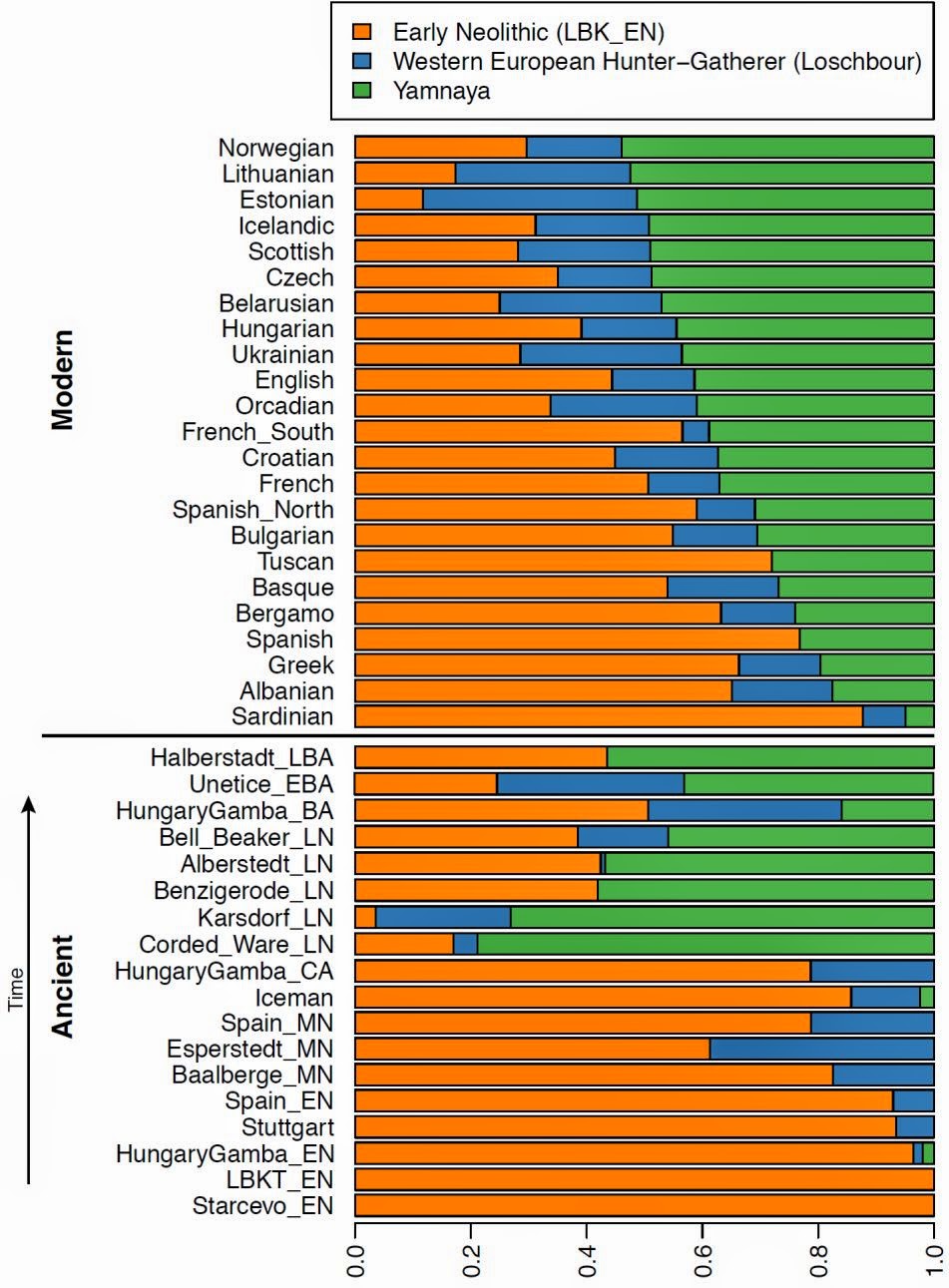
-
 1
1
-
-
Here's another interesting thing to inquire upon:
For anyone interested in the warrior way, some element of that mindset or spirit must be within them yet perhaps for some it may not have actualized to its fullest potential.
What are some ways to further awaken and deepen the ideal warrior mentality and spirit in our own lives? How can we more closely imitate the kshatriyas, samurai, knights, Spartans, etc. of history and become more like them in mind and spirit?
-
 1
1
-
-
Speaking of Evola, I believe elsewhere he commented on the path of alchemy, specifically referring to Hermetic alchemy but likely applies elsewhere, as being more suited to the Kshatriya/Warrior mentality than perhaps pure contemplation.
Another thing of interest is much of the Pali Cannon. Buddha, being a Kshatriya himself, often framed the Noble Path in military terminology, i.e. conquering Mara, making a fortress of your mind, etc. In the same vein the notion of "spiritual combat" or "unseen warfare" in Christian monasticism, Lorenzo Scupoli, etc. takes up a warrior framework in relation to self-mastery.
While much of ancient Druidism has been lost to us, one of the few known Druidic sayings to come down to us is something like, "Worship the immortal gods, do nothing ignoble, and practice manliness."
I suppose the samurai of the Edo period in Japan provide an interesting model of the warrior ideal in that the samurai remained warriors, practiced the martial arts, had the warrior mentality/spirit, and yet by and large lived in a time of peace. In other words they may provide an excellent resource for how to personally live as a peaceful warrior.
You have figures like Zhang Sanfeng who are associated both with the martial arts and success in neidan, but how much really does the internal martial arts have to deal with Daoist spiritual goals?
-
One problem with the idea that Western civilization is cancer is we have to be careful about what we are discussing. In my opinion what you see around you today--industrial and post-industrial civilization--is a late 19th, 20th, and 21st century phenomena that happened to originate in the West but on the whole is a symptom of a wider degeneration of Kali Yuga.
McDonalds, Scientism, liberal democracy, capitalism, Marxism, widespread atheism and nihilism, unloosened passions, ugly modern art, etc. are sometimes seen as "Western culture" or "Western civilization" but really its more proper to say "modern culture" and "modern civilization."
True Western civilization is that with roots in Greco-Roman Antiquity and the meeting of that civilization with the cultural groups of the Northern Celto-Germanic peoples, with the High Middle Ages perhaps being this Western civilization at its height. The culture and civilization of the medieval West and its sacred focus and orientation matches other civilizations and cultures, whether ancient China or India or Egypt, etc.
Various forces in place since the Renaissance and in particular the secular liberal "Enlightenment" era has lead to what we see around us today. I wouldn't look at modern Communist China and think it represents the high culture of the Han or Tang Dynasties for example or modern Japanese anime and pop culture having anything to do with the samurai and old traditions.
In other words, to see real spirit of Western culture look at Greco-Roman antiquity, Classical art and architecture, Gothic cathedrals, ancient Celtic art, the Megalithic cultures of Stonehenge, etc., Gregorian chant, JS Bach, Knighthood and chivalry, heraldry, the Arthurian tradition, Roman Catholicism for the exoteric religious tradition, Neoplatonism/Hermeticsm/Alchemy/Kabbalah, etc. as the esoteric tradition, the music of Richard Wagner, JRR Tolkien's legendarium, etc.
What you see around you in modern America and Europe has little to nothing to do with this real Western culture.
Though there are some who buy into the modern SJW orthodoxy nonsense which states that anything Western and anything emitting from the white man is always bad, negative, destructive, etc. period.
-
 2
2
-
-
On a personal end, I've had a pull to all things martial ever since childhood but I always neglected it. For example I joined Akido when I was 8-9 but it was a McDojo environment whereas I was looking to become something like a character from Mortal Kombat and so quit shortly thereafter. Then through my teens and early 20s I continued to admire the warrior but neglected integrating into my life favor of others things.
In particular I worry about time commitments. The spiritual path or the idea of the Great Work has been important to me since I was a teen and I had the notion that as much time and dedication should be put forth into that area as possible since it is, after all, the great matter of life and death. I've also placed strong emphasis on aesthetic cultivation, both the creation of (musician, artist,) and appreciation of art.
Throughout I've felt a neglect of something strong in me that's been with me my whole life, namely a drive toward the warrior spirit. And so recently I've been trying to get into peak physical condition, lift weights, learn boxing/self-defense, incorporate the warrior mindset more into my daily life, etc. The problem is I wish to continue but don't wish to distract myself from the greater goal of liberation.
Thus the twin cultivation of the Great Work and the martial path interests me and I am interested in historical figures, guidelines, insights, etc. that deal with the topic.
Any book recommendations in this regard?
-
 3
3
-
-
7 hours ago, voidisyinyang said:So you know from your thread on Buddhism and Daoism differences - that I pointed out an error of "nondualism" that I also made when I first entered into qigong training - and that is to see the eternal as a static realm of transcendent consciousness beyond spacetime.
The realm of timeless transcendence also interpenetrates and subsumes space-time. Whether one is completely in space-time (ordinary mortals) or timeless transcendence operating in what others perceive as space-time (immortals, sages, etc.) is based on ones ontological status. Julius Evola mentions this in his book on Tantra:
"According to this point of view there is no such thing as a relative reality and, beyond it, an absolute, impervious reality, but rather a relative, conditioned method of perceiving the only reality, and an absolute method."
There are few things I am absolutely certain of due to experience, but a personal direct experience of transcendence is what put me on the spiritual path in the first place and its confirmation in the words of the world's sages leaves me without doubt of the truth of the matter.
7 hours ago, voidisyinyang said:So it's not just that it is an error found in these "various traditions" that you seem to think are "advanced" - but in fact it is this error that is at the root of the evil of modern civilization itself.
The root of the evil of modern civilization is the loss of the perception of the sacred and the abandonment of the sacred. That this will occur is part of the same cyclical process that occurs in all of nature: day turning to night, spring turning to winter, youth turning to old age, etc.
The degenerative stage is known variously as Kali Yuga, the Dharma Ending Age/Latter Day of the Law, Hesiod's Iron Age, Ragnarok, etc. which we are currently in an advanced stage of.
7 hours ago, voidisyinyang said:And so in Brahmanism - it is still "divide and average" math based on the solar calendar - and imperialism.
this is why, as you have pointed out - the caste system is genetically tied to the white people from West Asia with a later invasion or immigration that spread throughout India - around 2000 BCE.
So to call this religion - "advanced" - is to me inherently racist thinking.
Well I know you have your own unique theory regarding mathematics, music theory, and solar calendars that you are continually propounding and sharing on this forum, and it's interesting, but I don't agree and, seeing as how passionate you are about these ideas, I can't expend time debating the finer details especially when I know it will ultimately fall on deaf ears.
6 hours ago, voidisyinyang said:Again I want to emphasize that this is wrong:
So as I stated before - the "nordic" northern european light eyes and blonde hair is actually from albino african genes - not "Aryan" indo-european phenotypes.
But it's not wrong. I never stated that Northern Europeans are white due to Indo-Europeans, I stated that the Indo-Europeans prior to admixture with other population groups were of a white/Northern European appearance. They mixed with pre-Indo-Europeans of Scandinavia who were of a similar appearance to them, but it doesn't change the fact that the Indo-Europeans originally were of that appearance as well.
-
How does the warrior's spiritual path differ from other types, whether more purely contemplative types or your average Joe?
How does one integrate the dual cultivation of spiritual perfection (immortality, Buddhahood, gnosis, etc.) and cultivation of the martial way?
Are there particular paths or emphases more suited to those with a warrior mentality than other people? For example, I've heard it stated that Jnana Yoga or Vedanta perhaps is more suited to the more purely contemplative or priestly "Brahmin" type whereas Raja Yoga or Hatha Yoga/Tantra is more suited to the warrior or "Kshatriya" type. Similarly in Japan one often heard the saying that Shingon/Tendai and Zen were more suited to the samurai and Pure Land was for the peasantry.
Where does Daoism in general and Daoist alchemy/neidan in particular fall in this matter? Daoism has a strong association with the internal martial arts, but is there a true connection to the path of the warrior or hero? Can a warrior succeed in neidan?
Finally, for those who consider themselves of a warrior temperament or seriously involved in the martial path, what in particular have you found useful in integrating both high spirituality and warriorship?
In short, please discuss any of the above or any other thoughts you may have on the path of the warrior in relation to that of the path of spiritual perfection.
-
 4
4
-
-
Louis Komjathy's view on the topic is of interest and one I largely agree with:
Popular Misconception:
Daoism consists of two forms, “philosophical Daoism” and “religious Daoism.”1
Informed View:
The distinction between so-called “philosophical Daoism” and so-called “religious Daoism” is a modern Western fiction, which reflects colonialist and missionary agendas and sensibilities. The use of such categories, even in scare quotation marks, should be taken, ipso facto, as indicative of ignorance concerning Daoism. From its beginnings in the Warring States period (480–222 bce), “Daoism” consisted of religious practitioners and communities. Considered as a whole, Daoism is a complex and diverse religious tradition. It consists of various adherents, communities, and movements, which cannot be reduced to a simplistic bifurcation. Its complexity may be mapped in terms of historical periodization as well as models of practice and attainment.
Popular Misconception:
“Philosophical Daoism” is the original form of Daoism and is best understood as “philosophy” (disembodied thinking/ way of thought).
Informed View:
Outside of the modern world, there is no form of Daoism that is not “religious.” Although there are aspects of Daoism that are “philosophical,” the category “philosophical Daoism” fails to consider the centrality of embodied practice (way of being), community, and place in Daoism, especially in “classical Daoism.” It is based on a systematic mischaracterization of the inner cultivation lineages of Warring States Daoism and a misreading of the earliest Daoist texts, namely, the Laozi (Lao-tzu; a.k.a. Daode jing) and Zhuangzi (Chuang-tzu), among others.
Popular Misconception:
Daojia 道家 and daojiao 道教 correspond to the Western categories of “philosophical Daoism” and “religious Daoism,” respectively
Informed View:
Daojia 道家, literally “Family of the Dao,” and daojiao 道教, literally “Teachings of the Dao,” are indigenous Chinese categories with no correspondence to the Western constructs of so-called “philosophical Daoism” and so-called “religious Daoism”. Each term has a complex history, with its meaning changing in different contexts. For example, in the fifth century, daojia referred to the Daoist religious community in general and the Daoist priesthood in particular.
From:
http://media.bloomsbury.com/rep/files/9781441168733_commonmisconceptions_daoisttradition.pdf
-
 3
3
-
-
Voidisyinyang, I am not sure what you are getting at. I've never claimed that only Aryans are white people-- the non-Indo-Europeans of Europe and other locales such as Western Russia and the Caucasus and even North Africa (various Berbers, etc.) were also "white people" you've noted.
I've never claimed that modern Europeans are "pure Aryans."
I've never mentioned the origins of white skin or other European features.
The only claim I've made, which is absolutely certain, is that the original proto-Indo-Europeans and the early Indo-Europeans as they spread across Eurasia were of an ethnic type that mostly correlates to Northern Europeans, insofar as they were Caucasoids often with fair hair, skin, and eyes.
Even the idea that there is some sort of supremacy involved in this claim is unfounded because often these Aryans invaded and conquered peoples who were more sophisticated than they were, such as the civilizations of Mesopotamia or the Indus Valley or the Mediterranean, much in the same way the less advanced Turco-Mongol steppe people often invaded and conquered the more advanced Chinese civilization.
Though one area where the Indo-Europeans or Aryans certainly were advanced and influential is in religion, mysticism, esotericism, philosophy etc. The influence of various traditions ranging from Brahmanism to Zoroastrianism to Greek thought to Druidism to Buddhism to Manichaeism, etc. on other religious traditions and peoples has been massive.
-
Also interesting to note the settlement of the Alans in medieval Europe, with the tribal name "Alans" just being a form of "Aryan." They most settled in what is now France and likely are the origin of the popular Breton/Norman name "Alan." Some of the eastern R1b (R1b ht35) has been found in fair number in and around the Scottish Border where my direct paternal ancestors hail from, though interestingly a contingent of related peoples, the Sarmatians, also were placed along Hadrian's Wall to defend against the Picts and remained after the Romans left.
Anyway, to show some images reinforcing what I argued earlier about the original ethnic element of Indo-Europeans, here are various Indo-European peoples who display that original type:
Tocharian Mummy:
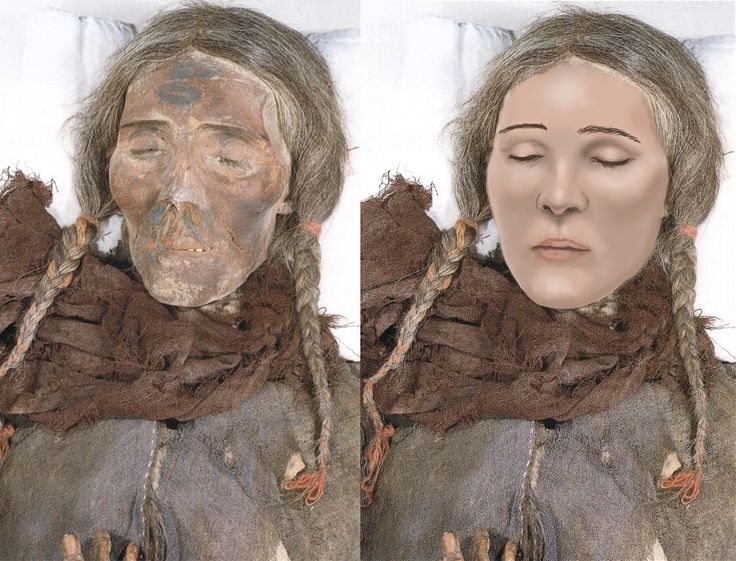
Sogdian or Tocharian monk next to an East Asian monk:
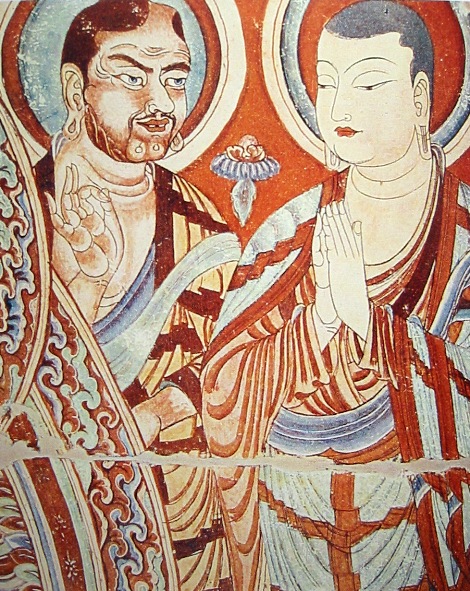
Uighur girl with likely Indo-European (Tocharian, etc.) ancestry:
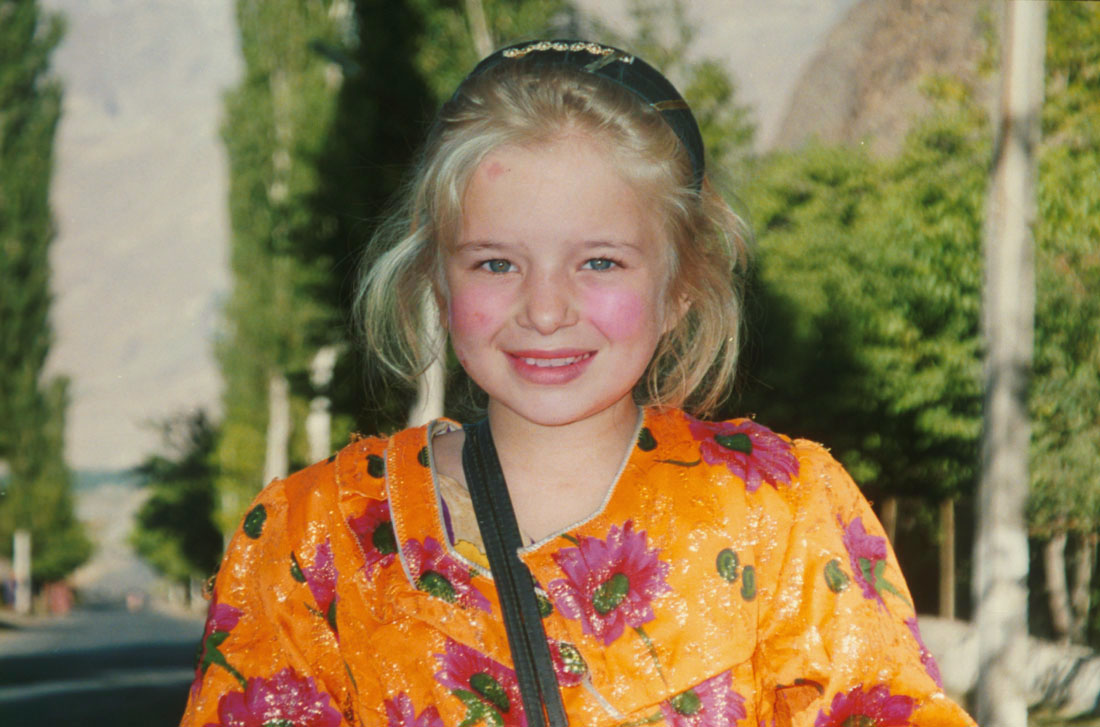
Nuristani man:
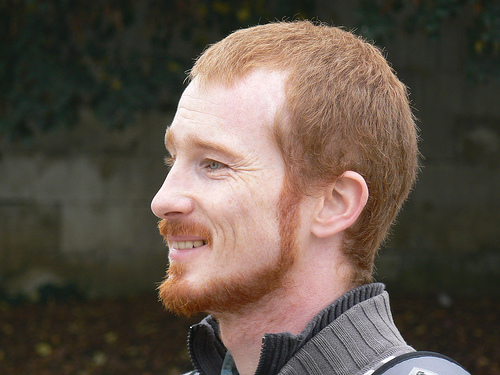
Afghan man:
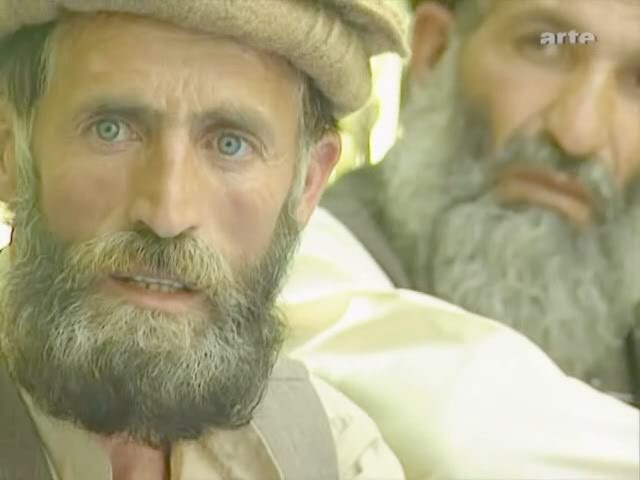
Pamiri Girl:
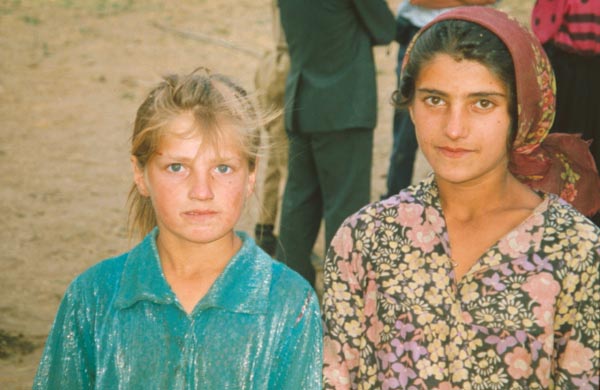
Kalash man:
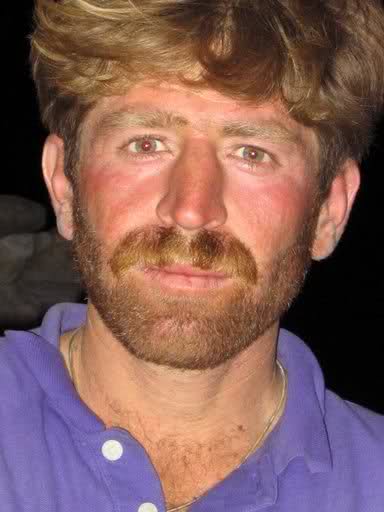
Iranian politician Mohammad Ali Ramin:
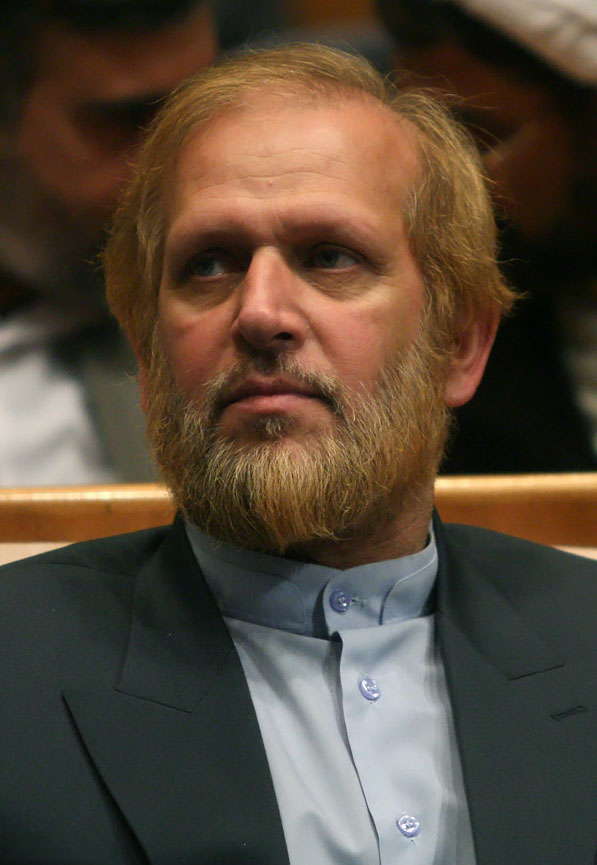
Kurdish Girl:
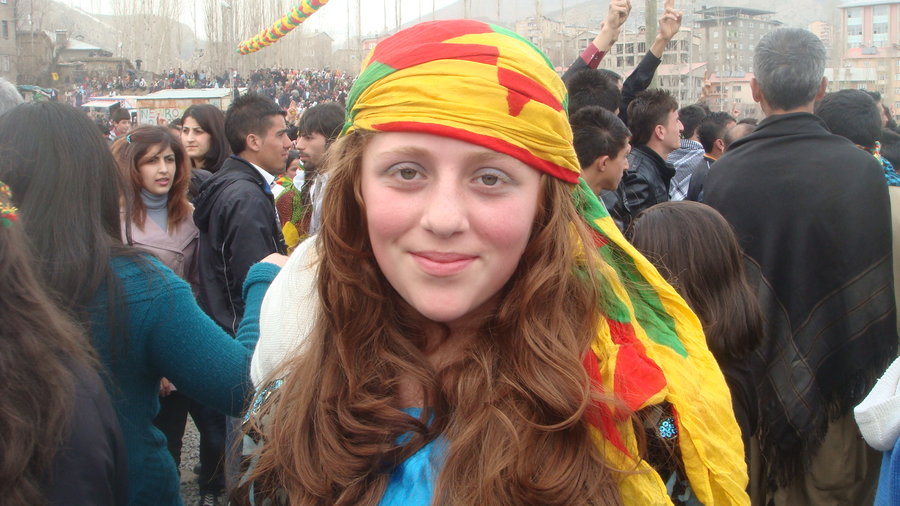
-
 2
2
-
-
I've read Kukai and am fairly familiar with Shingon (at least intellectually) as it is one of the sects of Buddhism (along with general East Asian esoteric Buddhism) that most interests me.
That said I can't agree with Kukai or much of Buddhist polemics regarding their unique superiority over every other tradition...to be honest in another thread I recently posted on Daoism and Buddhism's difference, where they do differ doctrinally I am mostly in agreement with Daoism's positions.
Furthermore Kukai's assessment of Daoism seems to largely be a straw man since he portrays Daoism as being concerned with getting into heaven, which according to Buddhism is samsaric, and therefore not leading to true liberation. Problem is this is not only a simplified and inaccurate view of Daoism but also fails to take Daoism on its own terms when it (usually) portrays immortality or "xianhood" or becoming a "zhenren" as being equivalent to Buddhist liberation, namely permanent and unable to be lost.
Another problem is the primary form of Daoism today and the one which interests me most, namely Quanzhen/Neidan, postdates Kukai.
Personally I am a bit of a perrenialist in many respects, so I'd say Shingon's Vairocana is equivalent to a personalized form of the Dao, and hence their powers would be equal.
Interestingly in the Buddhist hierarchy of traditions, particularly that employed in Tibet, Buddhism is supposed to be superior to all other traditions, Mahayana superior to Hinayana, Vajrayana as superior to "regular" Mahayana, and sometimes Dzogchen/Mahamudra put as superior to "regular" Vajrayana/tantra. Daoist alchemy in its methodology and framework is closer to tantric Buddhism than other forms and in its dialectic is often similar to Chan/Zen, which in turn is often seen as similar to Dzogchen in many respects. In other words, if Daoist alchemy/Quanzhen were a form of Buddhism it would be placed very highly on Tibetan (and Shingon) hierarchies of potency. Daniel Reid compares Quanzhen favorably with Dzogchen here for example:
http://danreid.org/daniel-reid-articles-practice-makes-perfect-dzogchen-chuanchen.asp
In short, I don't think Daoism is inferior to Buddhism in any way or I would just be a Buddhist, and indeed I personally often am in agreement with Daoism where the two differ.
Back to the primary topic, again I do find the Cundi mantra useful for a variety of reasons while being more interested in Daoism, but as noted am weary of falling into personalized paths of a New Age mishmash.
-
 1
1
-
-
Historically has there ever been the use of specifically Buddhist mantras, say particularly those with more mundane effects besides their purely spiritual effects (such as changing destiny, protection, etc.), by Daoists? From what I've read it seems the Daoists have their own mantras and even created some pseudo-Sanskrit mantras, but is there any precedent for a Daoist using Buddhist mantras and spells for their own use?
Is there any examples of contemporary Daoist use of Buddhist mantras? I figure someone with more direct knowledge of Chinese Daoism will likely have greater insight into this than me.
I ask because not only is the interaction between the two traditions historically an interest of mine, but I also find myself in the position where I tend to have more interest in Daoism as a personal path but also have practiced a Buddhist mantra (Cundi mantra) that I've found and continue to find useful. That said I don't wish to create my own personal New Age mishmash but rather am interested in being a sincere and traditional practitioner. Thus I'm in a bind as to whether, as someone interested in Daoism, it would be proper for me to recite this mantra. So far the only rationalization I can give is that Cundi is seen as a manifestation of Guanyin, who is also important in Daoism, and that Cundi is also often associated with the specifically Daoist goddess "Doumu" (they share the same mudra for example.)
Or is all of this just a case of me not understanding either tradition and the relationship between the two? In short, I wonder what a modern Quanzhen Daoshi/priest would think of the matter.
Thanks in advance for any insight and assistance.

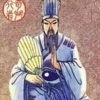
Who or what is answering?
in Yijing
Posted
Whatever the mystery that lies behind the Yijing it certainly is fascinating. Again not only answers I've received (including statistically improbable exact same answers to similar questions and ones which include exact words or phrases I contemplated in relation to my question) but also some shock-inducing synchronicities regarding my Yijing answers and later experiences in life.
Perhaps I will have to read Richard Smith's "Fathoming the Cosmos and Ordering the World" in order to find some traditional interpretations as I've been meaning to read the work anyway.
I did manage to find this passage from the book "The I Ching in Tokugawa Thought and Culture" when researching though:
The Ashikaga School was a training center for I Ching diviners. Its curriculum put more emphasis on divination than philosophy. Using the I Ching and Chou-i ming-ch’i ching as its major textbooks, it taught fourteen kinds of divinational skills, from the most basic yarrowstalk oracle techniques to advanced methods such as fate calculation, astrology, and geomancy. Before using the I Ching for divination, scholars of the School read a prayer that invited both Chinese and Japanese deities to come to the School. Here is a standard prayer recited by the ninth rector, Kanshitsu Genkitsu (1548–1612), in 1596:
In Japan, I—XXX who comes from X province, X prefecture, and X county, on X day of X month—want to use the oracles to solve my doubts. I am wholeheartedly inviting all deities in heaven and earth, Gods of Sun and Moon, Gods of the Five Stars, . . . the Child Holding the Yarrow Stalks, the Child Showing the Oracles, the God of the Six Lines, . . . all deities in Japan, Gods of the Four Directions, hundreds of guardian deities of the mountain, forest, river, and sea, Fu Hsi, King Wen, the Duke of Chou, Confucius, Cheng Hsüan, Wang Pi, Chu Hsi, and the spirit of past masters of the I Ching. I hope all of you can come to this place of ritual. This [paper] is the proof of urgency, please come at once, as requested.
So it appears at least this particular school invoked all possible deities, immortals, sages, and powers when inquiring of the oracle perhaps suggesting they believed one or all of them would aid in the answer.